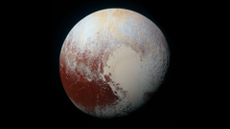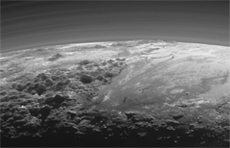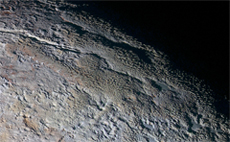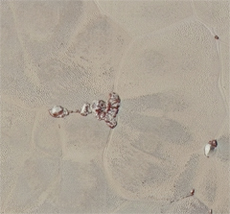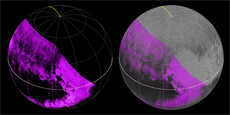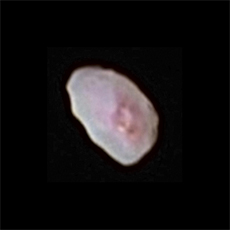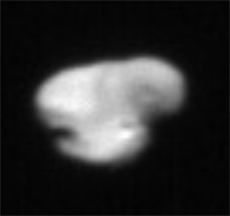
26th September 2015 Latest images from Pluto On 14th July this year, NASA's New Horizons spacecraft performed a close flyby of Pluto, becoming the first spacecraft in history to visit the distant world. At its closest approach, it flew 12,600 km (7,800 mi) above the surface, revealing icy mountains up to 11,000ft (3,300m) high, along with a bright surface feature nicknamed "The Heart". Since then, New Horizons has continued to explore Pluto and its moons. Because of the vast distance between Pluto and Earth, radio communications take four and a half hours (even at the speed of light) and it's only possible to return a faint signal at 1 or 2 kilobytes per second. It will therefore take until late 2016 to transmit all of the images and data. The most recent set of images is shown below. This includes the most detailed colour photo yet. A super hi-res version [69MB] is available directly from the NASA website by clicking here. Breathtaking views of the dwarf planet's majestic icy mountains, streams of frozen nitrogen and low-lying hazes are seen in the other images. A map of methane ice confirms striking regional differences in abundance (highlighted in pink). In addition to Pluto itself, NASA recently released the first clear images of its tiny moon Nix, showing rough edges and a prominent crater with unusual reddish/pink colouring. Also shown here is another moon, Hydra, which rotates chaotically due to the fluctuation of the Pluto-Charon gravitational field, as well as its irregular shape. Following its close encounter with Pluto, the New Horizons probe will venture even further into the Solar System – exploring the Kuiper Belt and eventually completing its mission in 2022, before heading towards the galactic core.
Click to enlarge
Comments »
|
